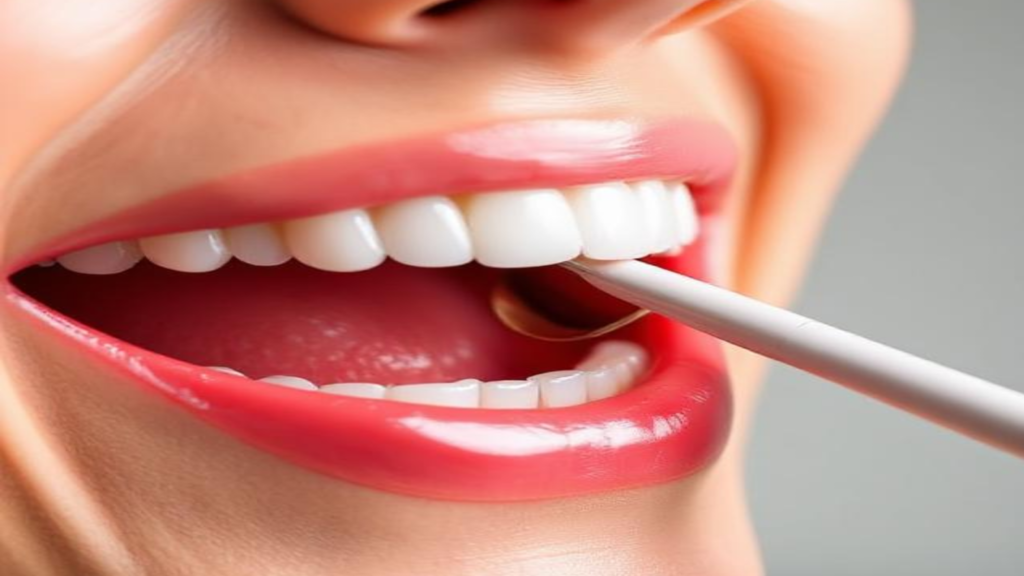You can stop early gum disease (gingivitis) with regular oral hygiene. When it becomes advanced, you can only hope to control it and keep it from progressing. A big step, along with deep cleanings is the following.
Much of this refers to controlling dental caries (cavities) but is just as effective at controlling periodontal disease.
For additional information and verification Google CAMBRA Caries Management By Risk Analysis. They will talk about testing the saliva and many other things. I tested saliva in 1970 and it didn’t always match what I saw in the mouths.
Also, Google 0.25% hypochlorite solution and dental caries disease for peer reviewed articles.
Here are the things to do.
1. Keep brushing and flossing.
2. Have all of your cavities taken care of.
3. Mix two teaspoons of laundry bleach in one quart of water. Rinse with one ounce, once a week only, for one minute. Do this for 8 weeks after the last filling is placed. Start now. (tastes terrible, but it’s worth it). For gum disease control, continue this one day a week from here on.
4. Start chewing gum with xylitol sugar in it, three times a day (Orbit, Mentos, etc.) Any chewing gum that has xylitol listed as the first ingredient. Some will argue that the amount of xylitol is important, since this will determine whether it is bacteriostatic, or bacteriocidal. It turns out that it doesn’t matter since the outcome is the same; bacterial population mixture control.
If you have a WaterPik with a reservoir you can use the bleach solution in that once a week. This also provides great results if you have periodontitis (diseased gums). Do not substitute this for regular dental follow-ups. Google 0.25% hypochlorite solution and periodontal disease for peer reviewed articles.

Periodontal disease is not all the same. There are various forms of adult chronic periodontitis manifested by the types of calculus (tartar) that forms above and below the gum. Some are thin, some are thick, some are nodular, some are white, some are brown, some black, some are green, some are soft, some are hard. Some types are easy to remove, and others are tenacious. What this means is that they are all formed in different ways by different bacteria or combinations thereof.
The rate of destruction of bone also varies from individual to individual dependent on their health (diabetes especially) and unknown factors.
The treatment is periodic scaling under the gums, followed with 10 days of 20mg of doxycycline twice a day to knock down the inflammation that complicates healing.
Then rinse or irrigate with the dilute bleach solution (two tsp per quart of water) once a week. I first learned about this from…wait for it…a patient. I diagnosed possible surgery after deep scaling his sub-gingival calculus. He said, “Doc, let me show you something in a week”. He returned, and all of his sub-gingival calculus was now above the gum; his inflamed gum shrunk to a healthy level. He said an older dentist told him about this in 1970, who learned it from an even older dentist. He said he felt stupid for not continuing the bleach rinses.
There is another type of gum disease that most dentists don’t know about that conventional treatment cannot treat. The patient just keeps getting worse and worse, loses teeth, and the dentist just scratches his head. Aggressive periodontitis is caused by one particular bacteria, and occurs in about 4% to 7% of young adults. It is rapid, and I have seen 22-year-olds with the back teeth very loose, called “floaters”, with no other treatment except the extraction of all the back teeth. Sometimes it’s also the front teeth. Another name for it is “poor man’s periodontitis”. It runs in families because of cross contamination; kissing is one way.
It is easily diagnosed by the distinctive smell. Regular periodontitis smells to me like mothballs and cedar. Aggressive periodontitis smells the same as the bottom of a dumpster in the produce portion of a market. The dentist has to take his mask off to do this.
The good news is that aggressive periodontitis is easily treated with the antibiotic doxycycline after scaling (higher dose, 5X, than mentioned before). And in many cases, the bone may grow back. Because it is fast, it has to be caught early.
It is also susceptible to control with the dilute bleach solution. Google aggressive periodontitis and 0.25% hypochlorite solutions
What are the best methods for getting rid of

gum disease without chemicals?
Well, everything is a chemical, even totally, organically produced anything.
I presume you mean moderate periodontitis as the gum disease. There is no magic potion. The dentist scrapes away the tartar under the gums, giving the body an ability to adapt and try to heal. The healing over-reaction by the gums gets in the way, and the antibiotic doxycycline in a sub-therapeutic dosage is often prescribed to knock down this inflammatory response. It comes from tetracycline, which comes from a fungus, which is natural, but a chemistry worked out by fungi for literally hundreds of millions of years.
You can slow it down with irrigation devices using water (WaterPik). Water is pretty natural. You might add xylitol sugar to the water, but xylitol is a synthetically produced “chemical”. It discourages bacterial growth. Also changes noxious population mixes.
A very dilute solution of sodium hypochlorite is very helpful when used once a week, but must be done in a carefully diluted concentration. But, again, it is a chemical.
Ask a more specific question. I know what works, and am not aware of any particularly successful supplements applied externally. Multiple vitamins, C do a good job internally. There are no poultices that can be applied to the gums.

